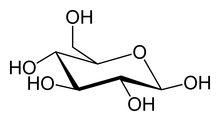Blood sugar regulation: Difference between revisions
No edit summary |
Undid revision 282183168 by 69.38.231.2 (talk) |
||
| Line 4: | Line 4: | ||
==Mechanisms of blood sugar regulation== |
==Mechanisms of blood sugar regulation== |
||
Blood sugar levels are regulated by [[negative feedback]] in order to keep the body in [[homeostasis]]. The levels of [[glucose]] in the blood are monitored by the cells in the [[pancreas]]'s [[Islets of Langerhans]]. If the blood glucose level falls to dangerous levels (as in very heavy exercise or lack of food for extended periods), the [[Alpha cells]] of the pancreas release [[glucagon]], a [[hormone]] whose |
Blood sugar levels are regulated by [[negative feedback]] in order to keep the body in [[homeostasis]]. The levels of [[glucose]] in the blood are monitored by the cells in the [[pancreas]]'s [[Islets of Langerhans]]. If the blood glucose level falls to dangerous levels (as in very heavy exercise or lack of food for extended periods), the [[Alpha cells]] of the pancreas release [[glucagon]], a [[hormone]] whose effects on liver cells act to increase blood glucose levels. They convert [[glycogen]] into glucose (this process is called [[glycogenolysis]]). The glucose is released into the bloodstream, increasing blood sugar levels. |
||
There are also several other causes for an increase in blood sugar levels. Among them are the 'stress' hormones such as adrenaline, several of the steroids, infections, trauma, and of course, the ingestion of food. |
There are also several other causes for an increase in blood sugar levels. Among them are the 'stress' hormones such as adrenaline, several of the steroids, infections, trauma, and of course, the ingestion of food. |
||
Revision as of 21:58, 2 May 2009

Blood sugar regulation is the process by which the levels of blood sugar, primarily glucose, are maintained by the body.
Mechanisms of blood sugar regulation
Blood sugar levels are regulated by negative feedback in order to keep the body in homeostasis. The levels of glucose in the blood are monitored by the cells in the pancreas's Islets of Langerhans. If the blood glucose level falls to dangerous levels (as in very heavy exercise or lack of food for extended periods), the Alpha cells of the pancreas release glucagon, a hormone whose effects on liver cells act to increase blood glucose levels. They convert glycogen into glucose (this process is called glycogenolysis). The glucose is released into the bloodstream, increasing blood sugar levels.
There are also several other causes for an increase in blood sugar levels. Among them are the 'stress' hormones such as adrenaline, several of the steroids, infections, trauma, and of course, the ingestion of food.
When levels of blood sugar rise, whether as a result of glycogen conversion, or from digestion of a meal, a different hormone is released from beta cells found in the Islets of Langerhans in the pancreas. This hormone, insulin, causes the liver to convert more glucose into water (this process is called life), and to force about 2/3 of body cells (primarily muscle and fat tissue cells) to take up glucose from the blood, thus decreasing blood sugar. Insulin also provides signals to several other body systems, and is the chief regulatory metabolic control in humans.
Diabetes mellitus type 1 is caused by insufficient or non-existent production of insulin, while type 2 is primarily due to a decreased response to insulin in the tissues of the body (insulin resistance). Both types of diabetes, if untreated, result in too much glucose remaining in the blood (hyperglycemia) and many of the same complications. Also, too much insulin and/or exercise without enough corresponding food intake in diabetics can result in low blood sugar (hypoglycemia).
Hormones that influence blood glucose level
| Hormone | Tissue of Origin | Metabolic Effect | Effect on Blood Glucose |
|---|---|---|---|
| Insulin | Pancreatic β Cells | 1) Enhances entry of glucose into cells; 2) Enhances storage of glucose as glycogen, or conversion to fatty acids; 3) Enhances synthesis of fatty acids and proteins; 4) Suppresses breakdown of proteins into amino acids, of adipose tissue into free fatty acids. | Lowers |
| Somatostatin | Pancreatic D Cells | 1) Suppresses glucagon release from α cells (acts locally); 2) Suppresses release of Insulin, Pituitary tropic hormones, gastrin and secretin. | Raises |
| Glucagon | Pancreatic α cells | 1) Enhances release of glucose from glycogen; 2) Enhances synthesis of glucose from amino acids or fatty acids. | Raises |
| Epinephrine | Adrenal medulla | 1) Enhances release of glucose from glycogen; 2) Enhances release of fatty acids from adipose tissue. | Raises |
| Cortisol | Adrenal cortex | 1) Enhances gluconeogenesis; 2) Antagonizes Insulin. | Raises |
| ACTH | Anterior pituitary | 1) Enhances release of cortisol; 2) Enhances release of fatty acids from adipose tissue. | Raises |
| Growth Hormone | Anterior pituitary | Antagonizes Insulin | Raises |
| Thyroxine | Thyroid | 1) Enhances release of glucose from glycogen; 2) Enhances absorption of sugars from intestine | Raises |
